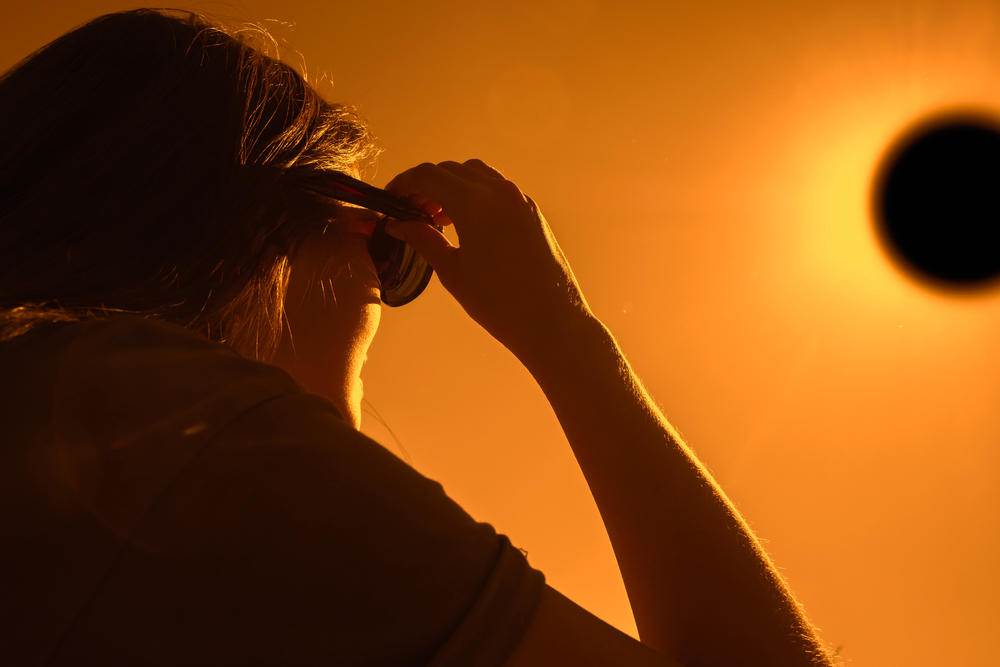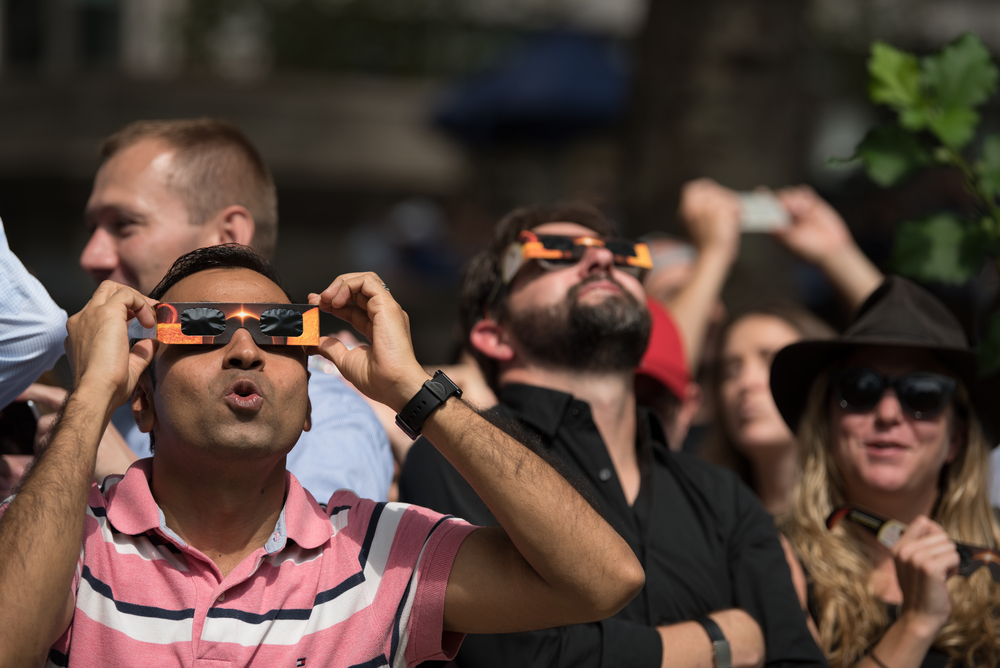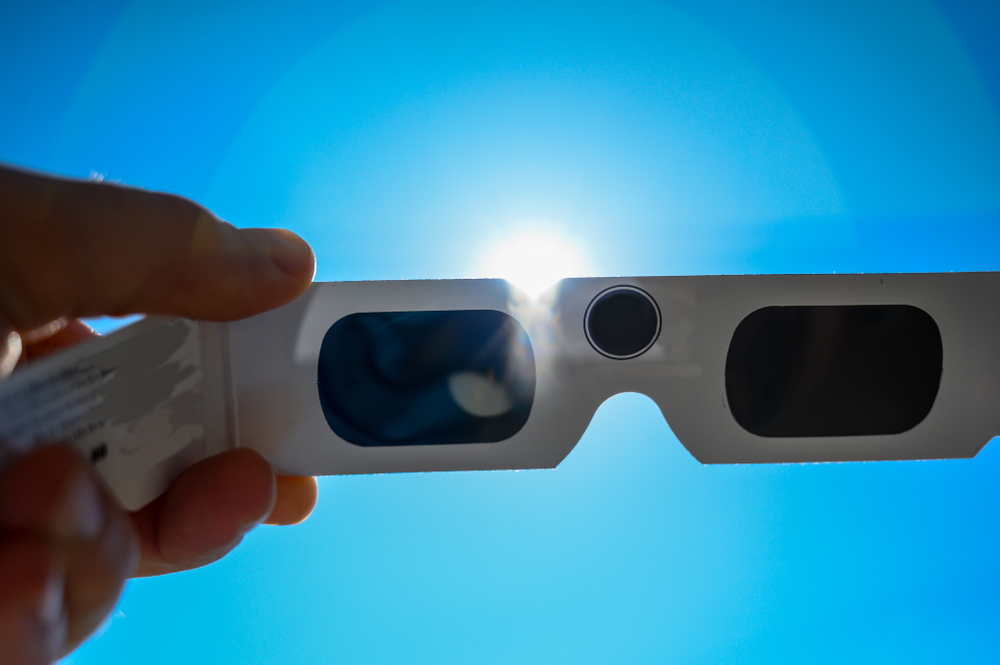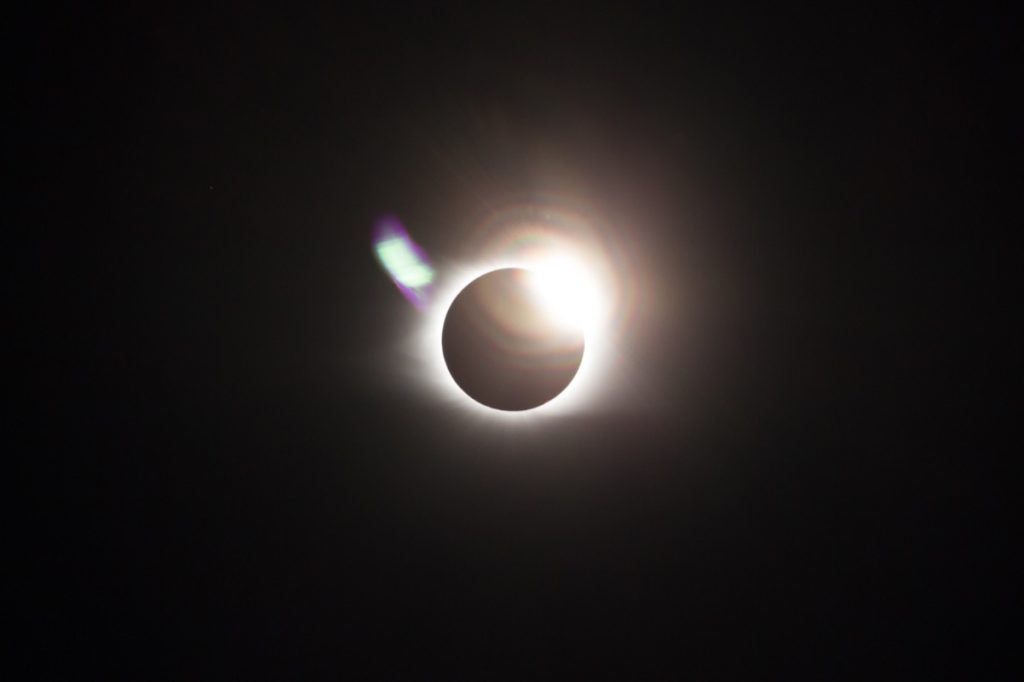A Special Solar Eclipse Will Create a “Ring of Fire” in the U.S.—Here’s How to See It

In terms of astronomical events, catching sight of a solar eclipse tends to be pretty high on the bucket list for even the most casual amateur astronomer. Besides the fact that they happen during the daytime, they’re also one of the few spectacles that don’t require a telescope to see—just special safety glasses—for those lucky enough to be in the right place at the right time when they occur. Usually, they also tend to draw out massive crowds as onlookers travel to bear witness to the relatively rare occurrence. If you’re looking for a similarly unique experience, you’ll also be able to watch a special solar eclipse that will create a “ring of fire” above the U.S. later this year. Read on to learn how you can see it for yourself.
READ THIS NEXT: 6 Stargazing Secrets, According to Astronomy Experts.
An annular solar eclipse will occur in the U.S. later this year.

If you still haven’t witnessed a solar eclipse, you may want to grab your calendar and start making some plans. This fall, a special annular solar eclipse will be visible across large swaths of the U.S. on Oct. 14 and provide a spectacle for millions of people, according to NASA.
Similar to a total solar eclipse, an annular eclipse results from the moon passing between the sun and the Earth, which creates a shadow on our planet. But since the moon will be at its furthest point from Earth when it moves across our star, it doesn’t entirely block it out. This means the sun’s edges are still visible, creating a spectacular “ring of fire” in the sky as light from the star’s outer edges reaches around our satellite, per NASA.
The path of annularity crosses through several states.

Getting the full effect of an annular solar eclipse is also similar to a total eclipse in that you need to be in the right place at the right time to view it. In this case, the path of annularity—or where coverage of the sun will be closest to total—first makes landfall on the coast of Oregon.
Beginning at around 8 a.m. local time, the moon will start to pass over the sun until it reaches annularity just over an hour later before eventually passing through California, Nevada, Utah, Arizona, Colorado, New Mexico, and Texas, according to NASA. Those on the Texas coast near Corpus Christi will see the spectacle around noon before the shadow passes and the partial eclipse ends after 1:30 p.m.
The viewing also isn’t just limited to those in the U.S. The shadow will then pass over Central and South America, crossing the Yucatan Peninsula in Mexico before reaching Guatemala, Belize, Honduras, Nicaragua, Panama, Colombia, and finally Northern Brazil before ending at sunset over the Atlantic Ocean.
But while nearly total coverage of the sun may only pass through a handful of states, those who live anywhere in the continental U.S. will still get at least a partial view. Residents in Southern California can still expect 80 percent coverage, and those on the northern edge of the eclipse’s visibility in New England will still see 20 percent of the sun covered by the moon.
RELATED: For more up-to-date information, sign up for our daily newsletter.
You’ll still need essential equipment to view the event safely.

One of the hallmarks of a total solar eclipse is that the brief window of full coverage by the moon allows viewers a few minutes where they can look up without protective glasses to take it in. But since the sun never disappears during an annular eclipse, there’s no point at which looking directly at the event won’t cause severe and potentially permanent damage to your eyes without the proper safety equipment, NASA warns.
Anyone planning on even taking a glimpse at the Oct. 14 eclipse will need to use special eclipse glasses with approved solar filters. The space agency specifies that everyday sunglasses do not provide the required protection and won’t keep your eyes safe during the event. And while protective viewing filters don’t degrade or expire over time, any pairs you’ve held on to that are scratched or damaged must be thrown away.
If you’re planning on using a telescope, camera lens, or binoculars to get a better view, it’s essential that you outfit them with the necessary filters in advance. Wearing protective solar glasses while using any of these devices without this extra protection also won’t help as “the concentrated solar rays will burn through the filter and cause serious eye injury,” NASA writes on its website.
You’ll also be able to view a total solar eclipse early next year.

If you’re not in the path of annularity—or even just holding out for the option to witness an even bigger event—you won’t have to wait much longer for another chance. On Apr. 8, 2024, North America will have front-row seats to its first total solar eclipse since 2017.
Similar to the Oct. 14 annular eclipse, viewers across most of the U.S. will have a view of at least a partial eclipse. But in this case, the path of full coverage runs in the nearly opposite direction, beginning around noon in Texas before the shadow travels north through Oklahoma, Arkansas, Missouri, Illinois, Kentucky, Indiana, Ohio, Pennsylvania, New York, Vermont, New Hampshire, and Maine before leaving the U.S. in the late afternoon, per NASA.
The total eclipse brings its own set of unique phenomena with it—including Bailey’s Beads, which are glimmers of light that form bright spots as sunlight passes through crags, craters, and valleys on the moon. And, of course, there’s the famously eerie darkness of “totality” created when the moon’s shadow passes.
But even as a rare event, you might want to make it a point to catch this particular total eclipse. That’s because it’s the last that will be visible in the United States until Aug. 23, 2044.